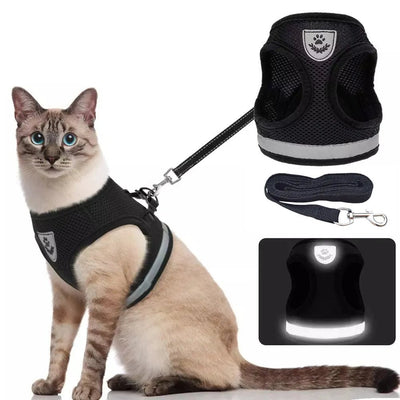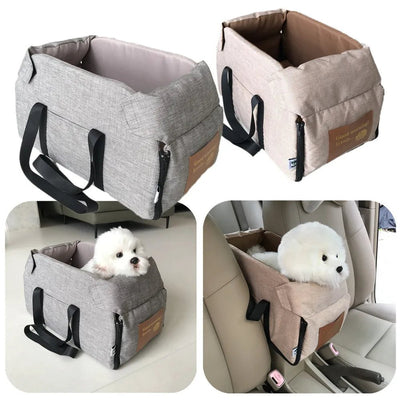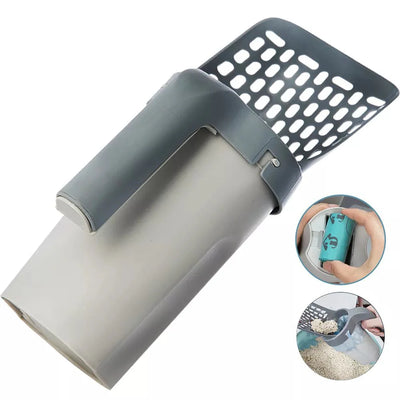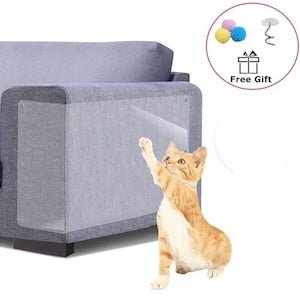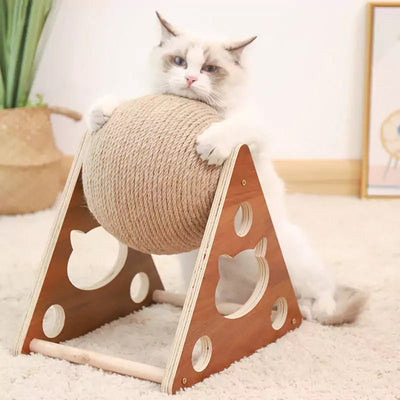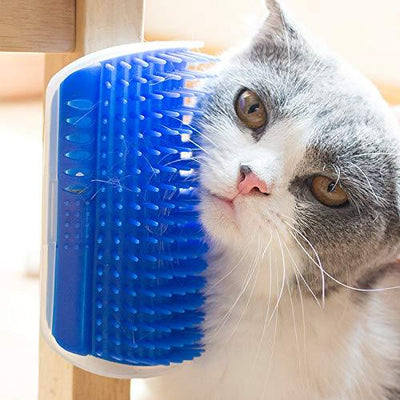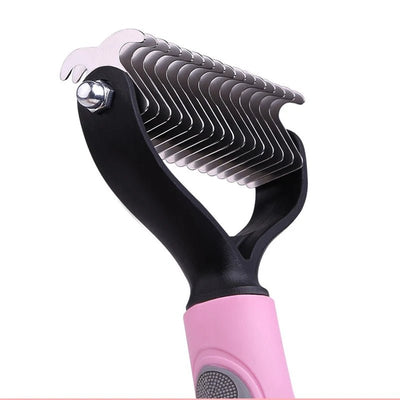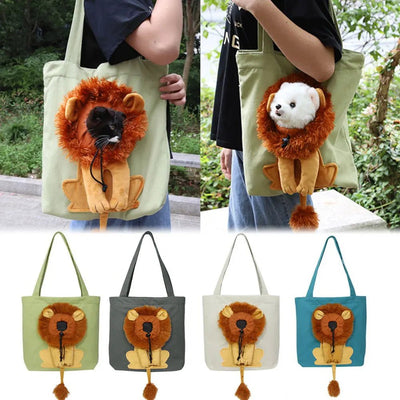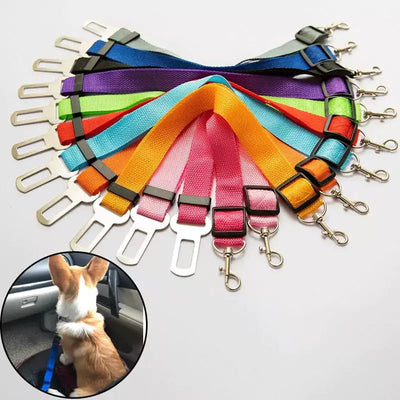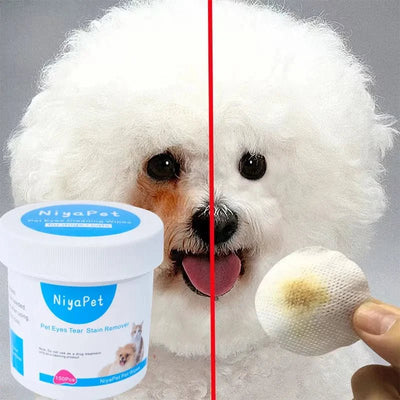Fleas and flea control in cats

The most common flea found on cats and dogs is the cat flea (Ctenocephalides felis). Occasionally, rabbit, hedgehog and other fleas may be found on cats but these are much less common. While many cats live with fleas and show minimal signs of infestation, control is advisable for several reasons including:
While many cats live with fleas and show minimal signs of infestation, control is advisable for several reasons including:
- The cat flea can carry the larval stage of the tapeworm Dipylidium caninum and cats become infected by eating (ingesting) fleas during grooming
- Fleas have the potential to transmit other infectious agents between cats
- Adult fleas feed on cat blood; in young kittens, this can cause weakness, anaemia and death
- Fleas are important in the transmission of ‘cat scratch disease’ between cats and to humans. This is an infection with the bacterium Bartonella hensellae and is spread when fleas feed on blood.
- Some dogs and cats develop an allergy to flea bites, which causes them to scratch excessively or develop skin disease
- Cat fleas can cause itchy bites on sensitive humans, typically around the ankles .
- Using modern treatments it is now possible to control cat fleas very effectively, but where the fleas are very common this may require considerable effort.
Does my cat have fleas?
When grooming, cats often ingest (eat) any fleas that they discover, which can make it difficult to find adult fleas in the hair coat. An itchy cat, or insect bites on human ankles, may be the only sign of an infestation.
The best way to demonstrate the presence of fleas is often to comb the cat meticulously with a fine-toothed ‘flea comb’. If you do this over a clean white surface such as a large piece of white paper, any fleas or ‘flea dirt’ (flea excrement consisting of digested blood) will be deposited onto the surface. If there is any debris (for example small black specs), place this on some damp cotton wool – if these are flea dirt, they will slowly dissolve leaving red-brown blood marks. This demonstrates the presence of fleas even if adults cannot be found.
The flea life cycle
Adult fleas spend most of their time on your dog or cat. They can live up to two years and a female will start laying eggs within two days of finding a host. The eggs that are laid by females fall off the cat or dog into the environment along with ‘flea dirt’ (flea excrement). This flea dirt provides a good source of food for flea larvae when they hatch from the eggs.
Larvae may hatch in as little as two days and are typically found wherever cats and dogs spend any length of time (typically in bedding etc). Larvae are photophobic (dislike light) and thus tend to move deep into carpets or soft furnishings so are often not seen.
The larvae grow and develop into pupae (potentially in as little as a week), each encased in a sticky cocoon. An adult flea develops within the cocoon and awaits a sign (vibration, moisture, noise, carbon dioxide levels) that there is an animal or person close by. The new adult flea can emerge and attach to the host within seconds, but fleas can lie waiting in the cocoon for up to two years.
In the right conditions, the whole life cycle of the flea can be completed in as little as 15 days, helping to explain why these parasites are so successful. For effective control, adult fleas on the cat must be killed and re-infestation from the environment prevented.
Tackling fleas in the home – an overview
Frequent vacuum cleaning will help to reduce, but not eliminate, fleas in a house. Vacuum bags should be immediately and carefully disposed of. Anything heavily infested, such as bedding, should be disposed of. Treatments can then be used to prevent re-infestation in a number of ways:
- Treat all the household pets with an insecticide to kill the adult fleas on them. Only ever use products specifically licensed for the treatment of cats, as some of the dog products can be highly toxic to cats (see later).
- Treat the house to eradicate fleas at all other stages of their development. Treatment of the whole house is essential, including soft furnishings, carpet pile, gaps between floorboards and other difficult to reach areas. Vacuum clean first and then use an appropriate flea insecticide to kill the immature stages.
- Cocoons (or pupae) are very resistant to treatment, and therefore repeated treatments of both animals and the household may be needed to completely eliminate all fleas from a home.
- Products with insect development inhibitors may be used on pets to help prevent immature fleas from maturing or reproducing. For these to be effective all animals in the household must be treated. Some environmental products also target developing fleas in this way.
To be effective, all treatment guidelines from your vet should be followed carefully. Talk to your vet clinic for some helpful advice. In some situations, it may take several weeks or even a few months to fully control a flea problem, but always follow the manufacturer’s guidelines carefully to avoid toxic effects.
Flea treatments available for cats
There is a vast array of flea treatments available from vets, pet shops and supermarkets for use in and on cats. It may not be obvious, but these products vary markedly in their compositions, mode of action, effectiveness and safety.
Many older products contain products that may be less effective or less safe (for the cat or the environment). It is important to always read and follow instructions carefully, and wherever possible, talk to your vet first and seek their advice – they will have access to the best and safest products for use in cats.
Many newer products are available as ‘spot on’ preparations that only have to be applied every few weeks. Again, it is important that instructions for use are followed carefully for the products to be both safe and effective. Never be tempted to use a dog product on a cat – some of these can be highly toxic to cats (especially those that contain permethrin).
Some flea treatments are also available as tablets, which may be easier for some owners to give, and some effective flea collars are also available. However, many of the products available from pet shops or supermarkets may have very poor efficacy. These are generally not the same as you would get from your vet, and veterinary advice is always best. Some sprays and powders should not be used near fish tanks because they are toxic to fish.
Always check if a product is safe to use on kittens, and pregnant or suckling cats if treating such animals.
‘Spot-on’ products
 ‘Spot on’ products have become widely available, but many different ingredients are now used in spot-ons; some are very good and some are much less effective (or less safe). The product is applied as drops, usually to the skin at the back of the neck. These are generally easy to apply but always follow the instructions, never use a dog product on a cat, and remember that not all ‘spot-ons’ are equally effective.
‘Spot on’ products have become widely available, but many different ingredients are now used in spot-ons; some are very good and some are much less effective (or less safe). The product is applied as drops, usually to the skin at the back of the neck. These are generally easy to apply but always follow the instructions, never use a dog product on a cat, and remember that not all ‘spot-ons’ are equally effective.
Again, for the best advice always speak to your vet who will know what is most suitable for your cat. Some products contain substances that kill adult fleas, others work by interrupting the development of fleas, and some do both.
Tablets
Tablets can be useful in some situations, especially if an owner finds these easier to administer than a spot-on, for example. Again, always use a product specifically recommended by your vet and licensed for use in cats.
See how to give your cat a tablet
Powders
Generally, flea powders are only active for as long as they remain on the coat and are not a good choice for treatment
International Cat Care does not recommend the use of flea powders as there are safer and more effective products available.
Collars
Insecticidal collars are impregnated with active ingredients such as permethrin, pyrethroids, organophosphates, or flea growth-inhibiting substances such as methoprene. In general, collars are not very effective, may also cause local skin irritation, and if they do not incorporate a safety snap-open device can lead to injury. However, some newer flea collars (only available from vets) may be far more effective and safer.
International Cat Care does not advocate the use of flea collars unless specifically recommended and purchased from a vet, as there are other much safer and more effective products than those available from pet shops and supermarkets.
Aerosol sprays
Aerosol sprays are problematic with cats as many cats find the ‘hissing’ noise they produce frightening. Additionally, many of these use older less effective and/or less safe products.
International Cat Care believes that there are safer, more effective and easier to give flea control treatment than using aerosol sprays.
Pump action sprays
Pump action sprays containing flea control products may be available and may be suitable for use as the pump action minimises any distress to the cat.
Insect (flea) growth regulators
As well as being present in some spot-on preparations or environmental sprays, flea growth regulators may also be available as an injectable product or as a product that can be given orally. These may be easier solutions for some cats, but should always be combined with a product that kills adult fleas.
Flea control products for use in the home
Sprays
Many environmental sprays for use in the home contain insecticides with or without an insect growth regulator. Never use these in close proximity to a fish tank as some contain products highly toxic to fish. If you have a fish tank, always ensure it is covered with damp towels if using these sprays.
A single application of the spray to the environment can last for six months to a year, depending on the product used. Note that some sprays contain permethrin and great care should be taken not to allow the spray to come in contact with cats. Consider also possible additive effects in cats undergoing treatment should the cat come into contact with other products containing these chemicals.
Foggers and bombs
Various foggers and bombs are available for treating the environment but these are not usually very effective as specific areas of infestation may not be reached. Spray products which allow areas to be targeted specifically are preferable.
‘Alternative’ products
Many so-called ‘natural’ compounds have been suggested to have flea-killing or flea-repellent qualities. These include concentrated eucalyptus oil, neem oil, pennyroyal oil, tea tree oil, citrus oil and D-limonene. Although some of these constituents are used in licensed products, many ‘alternative’ remedies will not have been through the rigorous safety and efficacy evaluation required for veterinary licensed products.
Some of these compounds are potentially toxic to cats and other animals, and none are likely to be anywhere near as effective as a licensed product from your vet. Do not rely on these products, and if you are at all unsure always consult your vet.
Using flea treatments responsibly
NEVER use a flea product on a cat that has been formulated for use on a dog – some of these contain permethrin, or related compounds, that can kill cats. Care should be taken to ensure that cats never have contact with these products, including contact with a recently treated dog as even this can lead to sufficient exposure to cause toxicity and death in cats
Some household pesticides such as wood treatments, ant and other insect killers may contain similar active ingredients to those used in flea treatments. To prevent additive effects, care must be taken to limit exposure to these.
Always read the small print carefully. Keep package inserts as they usually contain more detailed information than the outer packaging concerning any possible toxic hazards. If your pet does become ill after application of a product, always take the package insert with you to the vets. If in doubt, ask your vet.
Long-term flea control
Once adult and immature fleas have been completely removed from a household environment, further controls can be reappraised. In a household where none of the pets go outside, no further treatment may be necessary. However, if pets venture outside further treatment will invariably be needed to prevent re-infestation, probably in the form of a single product applied regularly. An ‘on-off’ approach to flea control (treating intermittently) is not recommended as this provides ideal conditions for the development of flea allergic skin disease in animals and will not provide good flea control.





































